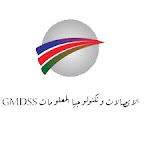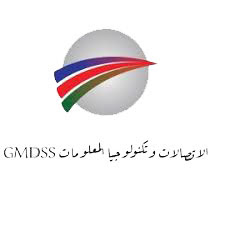Digital Transformation and Business Management: An Integrated System for Efficiency and Transparency
In light of the rapid technological development and digital transformation the world is witnessing, it has become necessary to design integrated programs that support all aspects of business and contribute to improving the administrative and operational performance of organizations. In this article, we review an integrated program containing several modules, including Audiences, Bookings, Customers, Sales, Departments, Employees, Financials, Invoices, Menus, Order Details, Orders, Productions, Products, and Rebor. These components work in harmony to achieve maximum efficiency and transparency in business management.
1. General Introduction
The program aims to meet the needs of companies and organizations that require a unified system that covers all basic operations, from customer management to production and restocking. This system offers an easy-to-use interface that allows quick access to important data and supports decision-making based on accurate and up-to-date information.
2. Audience Management
The Audiences module allows tracking and analysis of target groups of customers and visitors, helping design targeted marketing campaigns and customize offers based on user behavior and needs. This system helps identify trends and analyze demographic data to enhance effective communication with the public.
3. Bookings
The Bookings module manages all booking processes, whether related to events, services, or consultation sessions. Booking dates are recorded, cancellations, and modifications are tracked, ensuring time management and a seamless user experience.
4. Customer Management
The Customers module is the backbone of customer engagement, storing all personal data and purchase history for each customer. This contributes to building an integrated database that facilitates continuous communication and the provision of customized offers and services that meet customer needs.
5. Sales
The Sales module focuses on monitoring and analyzing sales performance, from recording deals to tracking daily and monthly revenues. This module enables the management of promotions and evaluation of sales team performance, helping to improve sales strategies and increase revenue.
6. Departments
Organizing work within an organization contributes to enhancing productivity. The Departments module enables the management and organization of various departments, such as marketing, sales, finance, and production. It defines the responsibilities of each department and ensures cooperation and coordination between different teams.
7. Employees
The Employees module focuses on managing employee data, from contact information and professional records to work schedules and periodic evaluations. The system helps improve human resource management and provide an organized work environment that encourages high performance.
8. Financials
The Financials module represents the control center for all financial transactions within the organization, where revenues, expenses, and periodic financial reports are recorded. This contributes to achieving complete transparency in financial transactions and assists management in sound financial planning.
9. Invoices
The Invoices module issues and tracks invoices for clients and suppliers, ensuring that revenue collection and payment settlements are organized and accurate. Detailed records are maintained for all transactions to facilitate auditing and review.
10. Menus
The Menus module is particularly essential in the restaurant and food service sectors, where menus and food products are managed. This module allows for easy updating of offers and listing of new products, with the ability to customize menus for special occasions and requests.
11. OrderDetails and Orders
The OrderDetails and Orders modules work together to record all details of customer orders. This process includes recording ordered products, quantities, and agreed-upon delivery dates, as well as tracking order status to ensure customer satisfaction and improve the shopping experience.
12. Productions and Products
On the production side, the Productions module helps track manufacturing and assembly processes, while the Products module focuses on managing product-related data, from manufacturing details to quality control and inventory availability. Integration between these two modules contributes to optimizing manufacturing processes and ensuring the delivery of high-quality products to the market.
13. Restocking (Rebor)
Rebor is a vital module that helps monitor inventory levels and reorder when needed. This module ensures that product shortages are avoided and that supply and demand are balanced, contributing to the continuity of operations without interruption.
14. Integration and Efficiency
By connecting these different modules, the program can provide integrated solutions that cover all aspects of business management. Integration between system modules enhances the smooth and rapid exchange of data, leading to informed decisions and achieving the highest levels of operational efficiency.
15. Conclusion
This integrated program is a strategic tool for organizations seeking excellence in managing their various operations. Thanks to the multiple modules it covers, companies can improve customer experience, increase employee efficiency, boost sales, and ensure accurate financial management, opening new horizons for growth and development in a competitive business environment.
This system can be considered the backbone that supports all vital operations within the organization, helping it adapt to changing challenges and move toward a promising future built on efficiency and innovation.




0 تعليقات